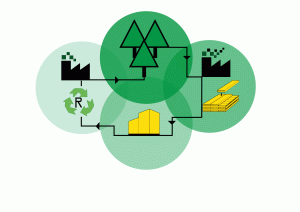This year the UK experienced the driest nine-month period since 1976 and the highest risk of wildfires. Floods, droughts, storms, and wildfire incidents are becoming more frequent. This is a sign that climate change is neither a sci-fi scenario nor a distant threat. Despite investments in net zero emerging technologies (e.g. carbon capture and storage), the key question is what we can do now to decrease our CO2 emissions.
Buildings and construction are responsible for approximately 40% of all greenhouse gas emissions. Construction steel and cement production together account for approximately 11% of all industrial CO2 emissions [1] and operational-energy related CO2 emissions from buildings are estimated to be 30% of total anthropogenic emissions in 2021 [2]. Meanwhile, the current shortage of homes in England is estimated at 4 million, requiring 350,000 homes to be built per year [3]. To meet the 2050 UK Net Zero targets, the construction industry is under pressure to use sustainable and renewable materials like timber. Despite the environmental benefits of timber, manufacturing (primary and secondary processing) and transportation account for the majority of its embodied carbon and energy. Therefore, it is necessary to optimise the use of timber and focus on local resources and market opportunities and improve timber expertise and current manufacturing methods. Trees sequester biogenic carbon during growth, and this is stored in timber products until end-of-life. The longer those products are in-use, the greater the size of the effective carbon sink this creates. Timber buildings are related to health and well-being which is opportune with the new remote work culture in the post-COVID era. However, the increasing demand in timber should be well managed with current UK forestry stock and afforestation strategies combined with sustainable land management and associated socio-economic impacts, biodiversity principles and climate-related risks in forestry (e.g., droughts, fires, pests and diseases)
For this design competition we ask you to:
Reimagine a future built environment with UK timber
Entries should focus on the local supply chain within the South of England and South Wales and may include but are not limited to proposals for:
- Architectural design proposals (e.g., Housing),
- structures,
- training (to address skills shortage),
- forestry,
- communities,
- land use,
- sustainable cities.
Design Criteria
- Creative, sustainable and affordable solutions,
- Strategies for efficient use of our forest stocks,
- Strategies for efficient use of waste timber,
- Design for resilience to climate change / adaptation.
Assessment criteria
- Response to climate emergency / Circular economy principles,
- Impact potential / Practicality,
- Demonstration of use of local sources (untapped sources),
- Creativity and Innovation,
- Whole systems approach.
Group submissions and interdisciplinary approach are encouraged.
Judging Panel members
Prizes
- 1st prize: £1000
- 2nd prize: £500
- 3rd prize: £250
Format of submission:
One A2 poster (Illustrations, sketches, diagrams are preferred) – Landscape orientation (max size 10 MB)
The posters and full list of names and contacts per group should be sent to: CEtimberGW4@gmail.com
For any questions, please e-mail CEtimberGW4@gmail.com
Key deadlines
Submission date: 30th November
Award ceremony: 15th December
To see the winners and the winning posters, please check this post.
The design competition is supported by Timber Development UK.

References
[1]Global Alliance for Buildings and Construction. (2019). ‘2019 Global Status Report for Buildings and Construction. Towards a zero-emissions, efficient and resilient buildings and construction sector’.
[2] London Energy Transformation Initiative (LETI). (2020). ‘LETI Embodied Carbon Primer. Supplementary guidance to the Climate Emergency Design Guide’
[3] The All Party Parliamentary Group for the Timber Industries. (2021). ‘How the Timber Industries can help solve the housing crisis’.





